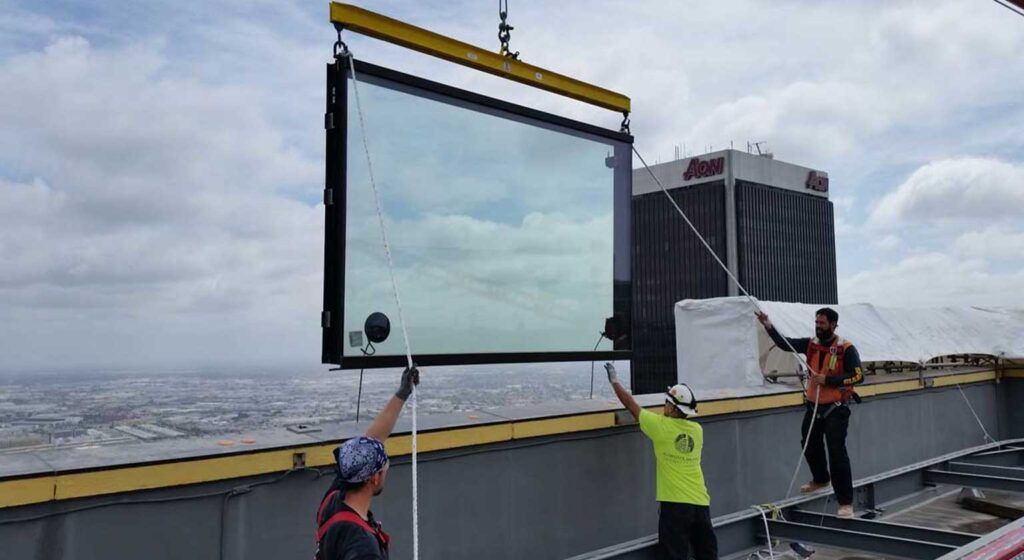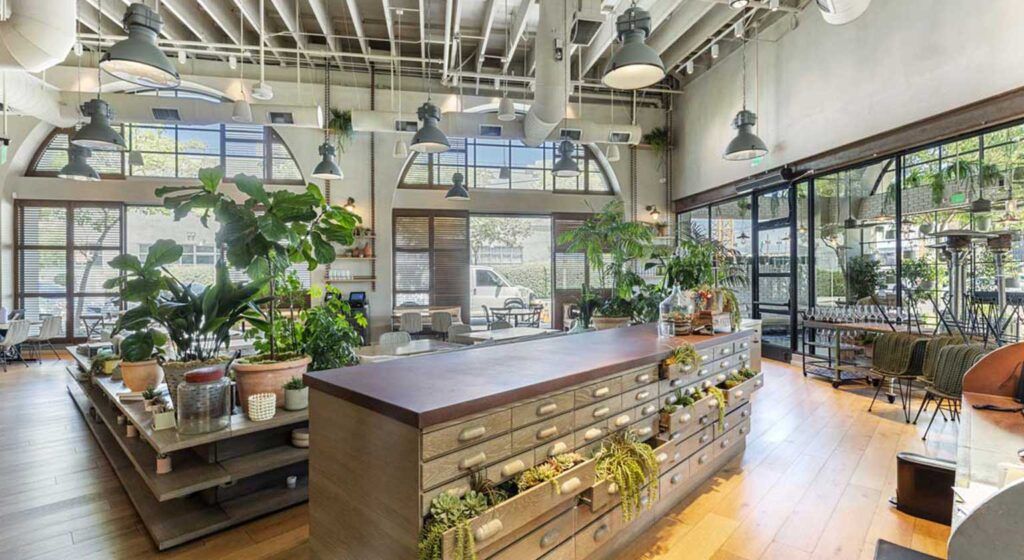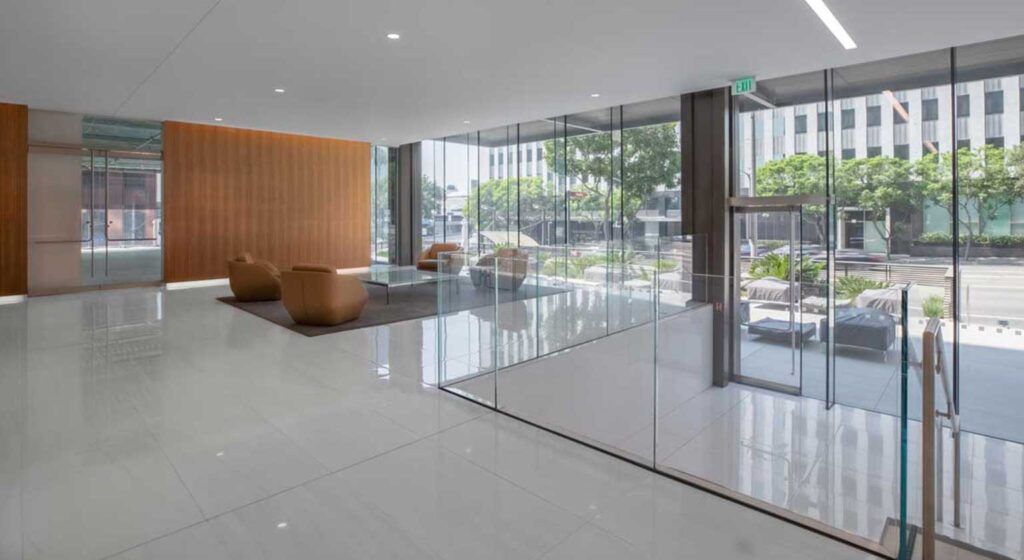
All buildings need to be renovated from time to time. In 2022 alone, $51 billion was spent on commercial property remodeling, with an expectation for about two percent expansion in 2023. Commercial renovations can range from relatively small cosmetic changes to entire interior redesigns.
Because building renovations are usually long-lasting and expensive, there is little room for error. It’s smart to follow a precise path that will make sure you meet all your requirements.
Assessing the Need for Renovation
Renovations can be a major undertaking, so it is important to thoroughly assess whether the need is appropriate. In some cases, especially when deterioration has led to unsafe conditions, immediate renovation is justified. In other cases, where the renovation is purely cosmetic, drawing plans is not as critical.
- First, identify the purpose and goals of the renovation project. This will help clarify your overall vision and aid in selecting a suitable renovation team. The purpose could be as minor as a décor refresh, like updated paint colors, or as large as entirely repurposing the building or one area for a different use.
- Second, evaluate the current state of the building. Many features may need to be updated, but some may be more necessary than others.
- Third, engage stakeholders and understand their requirements. So long as many people have an interest in what happens to the building, it is important to get their opinion about renovations before the project starts.
- Finally, establish a realistic budget and timeline. This will help keep the project on track and down to earth.

Planning and Designing a Renovation
Thoroughly planning your renovation will help it proceed more smoothly and lead to better results.
- To start, form a renovation team and assign responsibilities. Make sure that each member of your organization who is involved knows exactly what they are responsible for, such as researching materials, or coordinating with contractors.
- Before you begin the renovation, you may need to conduct a feasibility study and site analysis. Depending on your location, there may be important regulations for building, involving geological, environmental, or archaeological factors.
- Once you are sure that your overall mission is feasible, you can begin brainstorming and conceptualizing design ideas. This is where you can let your creativity flow and come up with ideas that will represent your organization or brand.
- In the process, you should aim to integrate sustainable and energy-efficient design principles. In our era of increasing climate change, unpredictability, and environmental disaster, it is especially important to embrace sustainable building practices.

Glass Technology and its Role in Commercial Renovations
Glass technology in architecture has evolved significantly since it was first used thousands of years ago. No longer fragile or merely decorative, commercial glass can be highly functional and strong.
Building designers have many options when it comes to advanced glass technology:
- Tempered glass is an extremely strong glass that is often used in the current trend toward bigger and more frameless windows. It has been treated with heat in such a way as to increase its strength and resistance to shattering.
- Laminated glass is made from two pieces of glass glued together with a laminate in between. This process makes the glass extremely strong, and resistant to breakingdangerouslyy. Because of the laminated layer, the glass tends to fracture into a spiderweb pattern when broken, instead of sending fragments flying everywhere.
- The laminate layer also enables additional features (in separate options) that range from soundproofing, fire and bullet resistance, and bird friendliness to unique graphic expressions and color.
- Smart glass comes in many forms and is used to control the amount and quality of light that enters the building. Some forms of smart glass, like suspended-particle glass and electrochromic glass, are triggered by electrical impulses, and so can be turned on and off. Other types of smart glass, such as thermochromic glass and photochromic glass can be programmed to adjust their opacity automatically based on the energy-efficiency requirements of their environment.
- Energy-efficient glass can be a particularly effective product for reducing energy consumption and is often the driving factor for window and storefront renovations. It’s important to note that in addition to the composition of the glass, other factors – such as the type and quality of the materials used for framing and sealing – can also affect a window’s energy efficiency. And most importantly, we recommend that all glass be installed by experienced glazing professionals like the team at Giroux Glass.
Hiring Contractors and Subcontractors
Contractors and subcontractors vary widely in their skills, qualifications, and experience, and finding the right ones is important.
- First, identify reputable contractors who have experience in commercial renovations. Check third-party reviews and the Better Business Bureau to see if anyone has previously experienced problems with them.
- Second, request and review proposals from multiple contractors. Since your project is unique, there is no set market price for it. Different contractors will quote different estimates, and you must balance that information with your assessment of their overall quality, experience, and any warranty they offer for their work and materials.
- Third, conduct thorough background checks and speak to client references. This will help ensure that the contractor you choose is dependable and completed projects like yours.
- Finally, negotiate a contract and ensure all legal aspects are covered. Some dishonest contractors may try to cheat clients through loopholes, so make sure your contract is airtight.

Executing the Renovation
When you hire a third-party contractor, most of the work you will oversee will involve managing and communicating with the renovation team. Here are some tips for greater success:
- Establish a project management plan to keep people aligned and tasks on schedule. This plan may include details like scope, schedule, budget, and communication protocols.
- Implement safety measures during the renovation process. If you hire a good contractor, safety will be their top priority.
- Monitor progress and address any issues promptly. Even with an excellent plan, contractors may do something you did not expect. Voice your concerns immediately to realign them with your vision.
- Overall, remember to collaborate with the renovation team and with stakeholders. Renovation is a multi-party operation that involves and affects many people.
Quality Control and Inspection
Quality control is important to ensure that the renovations are proceeding according to the standards you set.
- Perform regular quality control checks to make sure that your contractor is maintaining the standards you want. This can be as simple as a quick walkthrough of the renovation site, or involve more precise tests, such as thermal or air pressure measurements.
- Resolve any defects or deficiencies upon finding them. Point out the problem to your contractor, ask why it happened, and discuss a mutually agreeable solution.

Emphasizing Sustainability and Energy Efficiency
As the world faces more climate-related problems, it becomes increasingly important to emphasize sustainability and energy efficiency in new construction and renovations. Green building practices should be integrated into the renovation from day one.
If applicable, we recommend obtaining one of several green building certifications. These are certifications like Energy Star, LEED, and WELL.
Energy-efficient systems and technologies, including energy-efficient glass choices, may take many different forms, such as:
- Enhanced insulation
- Solar or wind power
- Window control systems
- Reflecting roof materials
Finalizing the Renovation
After the renovation is complete, it is important to double-check everything to make sure the job is done right.
- Conduct a final inspection and obtain the necessary permits. This will ensure that your building is fit for use.
- Prepare the building for occupancy and use. This may include adding furniture or décor, as well as mapping out how each room will be used.
- Finally, don’t forget to celebrate! Renovating a building is an important milestone, sometimes commemorated with a grand re-opening or ribbon-cutting ceremony.
Conclusion
We conclude with the following comprehensive checklist. This includes every key step that a building owner should take care of during, before, and after a renovation:
- Identify the purpose and goals of the renovation.
- Evaluate the current state of the building.
- Engage stakeholders and understand their requirements.
- Establish a realistic budget and timeline.
- Form a renovation team and assign responsibilities.
- Conduct a feasibility study and site analysis.
- Brainstorm and conceptualize design ideas.
- Integrate sustainable and energy-efficient design principles.
- Adhere to local building codes and regulations.
- Understand the importance of material selection.
- Explore the latest advancements in building materials.
- Prioritize durability, functionality, and aesthetic appeal.
- Identify reputable contractors with relevant experience.
- Request and review proposals from multiple contractors.
- Conduct thorough background checks on each contractor.
- Negotiate contracts and cover all legal aspects.
- Establish a project management plan.
- Implement safety measures.
- Monitor progress and address issues quickly.
- Collaborate with the renovation team and stakeholders.
- Perform regular quality control checks.
- Conduct inspections to ensure compliance with safety and design standards.
- Resolve any defects and deficiencies.
- Integrate green building practices into the renovation
- Install energy-efficient systems and technologies.
- Obtain green building certifications if applicable.
- Conduct final inspections and obtain necessary permits.
- Prepare the building for occupancy or use.
- Celebrate the successful completion of the project.
We recognize that a perfect renovation is never guaranteed. But if you follow this checklist, you will certainly reduce the risk of many problems occurring.
And if you hire the right subcontractors to manage your project, your chances are greater still. Since 1946, Giroux Glass has specialized in installing glass and metal in commercial building renovations. We install a wide variety of glass types, such as laminated glass, tempered glass, and diverse kinds of smart glasses. We’re the expert professionals you can trust to see your project successfully completed.
Does glass play a role in your next renovation? We’d love to talk!